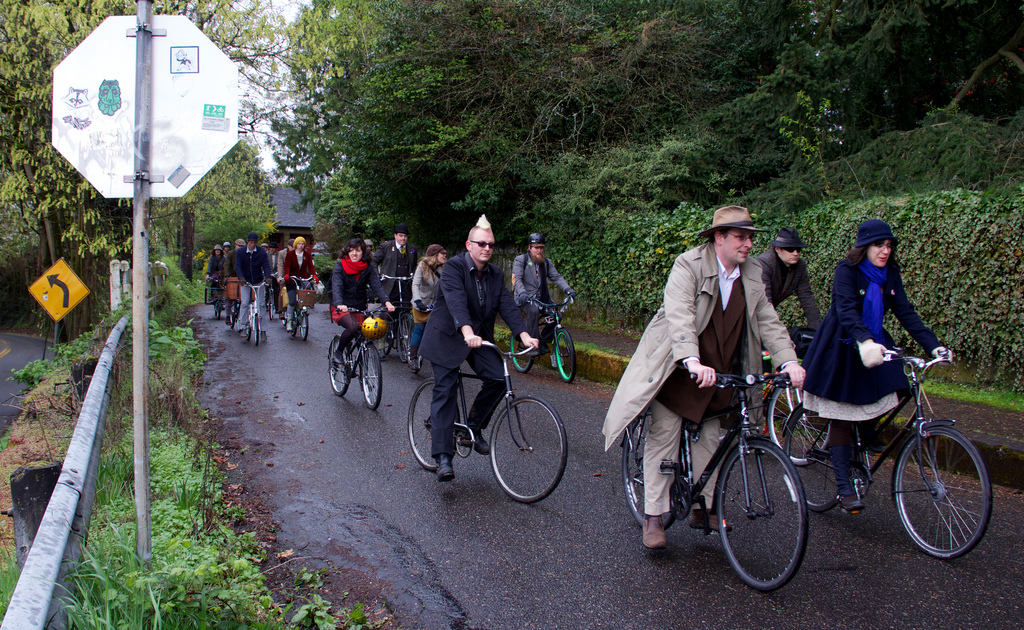When I was young, I left the Motor City for a city that I would never have to drive in again. Years later, so did my sister.
Television commercials made the relationship between cars and humans look like a romance, but from a kid’s perspective, it looked like an abusive relationship. Automobiles had a way of breaking down when you needed them most, taking large amounts of your money without warning, and attracting unwelcome attention from law enforcement officers. Little in the movie 8-Mile feels like a genuine depiction of Detroit life, but one thing feels accurate: the way that no one’s car will start.
I moved to San Francisco. My sister moved to Portland. I love San Francisco, the way that you do, but whenever I visit my sister I cannot help noticing that — as far as gracious, car-free living goes — she made the better choice. When I visit her, I don’t have to look at every car that I pass and gauge the risk of being doored, because, in a lot of places, the bike lane is wide enough for both me and an open car door. I rarely have to merge into car traffic and route myself around someone who has double-parked in the middle of a bike lane, because some traffic engineer has thoughtfully placed a barrier between car and bike traffic. All is not perfect; my sister still got doored last winter. But Portland had zero bike deaths last year (and many years before it), which is more than you can say about San Francisco.
How did this come to pass? While Portland has a reputation for being the most uber-millennial of millennial cities, it’s not that different from your average American college town. Bicycling in cities has been on the rise for years now; what made Portland so ready for it, when bicyclists in other cities have had to struggle? I did some digging, and came up with a few theories.
Portland had a head start.
In the early ’60s, revolts against unwanted highway construction began to break out in cities all across the U.S. Portland was one of those cities, but it became especially noteworthy for taking federal funds that had been meant for highways and appropriating them for other things, like transit.
In 1971, Tom McCall, then-governor of Oregon, signed the “bike bill,” which required that 1 percent of all highway funds be spent on making roads and new infrastructure accessible to cyclists and pedestrians. The “bike” aspect of it was somewhat trendy. At the time, the U.S. was going through a cycling boom that was part giddiness over new bicycle technology, part environmental sentiment, and part everybody-was-broke-because-there-was-a-recession. As the bike trend busted, that 1 percent wasn’t always used for bikes, but it did remain as a regular source of funding that didn’t have to be carved out of someone else’s budget.
Portland’s city structure made it easier for cyclists to gain political power.
Every city has its own government, both official and unofficial. New York made a huge leap in its cycling infrastructure after 2007, when then Mayor Bloomberg gave Jeanette Sadik-Khan unprecedented powers to bike-ify New York. That would never happen in Portland, which doesn’t have a very powerful mayor. But that also doesn’t matter, since city commissioners there are so powerful that they don’t need the mayor’s backing.
In the late ’80s, the city’s transportation commissioner and bicycle program manager set out to implement a master bike plan for the city and make it happen by actually enforcing the Bike Bill. The transportation commissioner, Earl Blumenauer, went on to Congress, where he continues to work on bike issues. The program manager, Mia Birk, went on to help form Alta BikeShare. The transportation commissioner job remains one that bike advocates keep an eye on.
Portland has politicians who are also bikers.
The problem for most American cities, says Jonathan Maus, the co-founder of Bike Portland, is that most people in positions of power don’t ride bicycles. “When they do ride bicycles they do it as a photo op. They do it as an event ride, in the middle of a large group. That is not biking to work at 7:30 a.m. on a foggy morning.” The politicians that do, he says, are the ones that are the most likely to push forward bike plans that are actually useful to regular, day-to-day riders.
Portlanders go to meetings.
To the meeting-averse, this is terrifying. But in my years as a city reporter I’ve witnessed firsthand the way that people who can show up (or even better, show up with a large group of people) often become key power players in city government, whether they run for office or not.
Portland Bureau of Transportation bike coordinator Roger Geller told me a story about when a cyclist asked pro-bike departing mayor Sam Adams about how they could make sure all the lofty plans they had come up with were going to be implemented, now that they no longer had a mayor helping them out. “Show up,” was Adams’ advice. “Show up at city council. Just keep on showing up. Your elected officials need to know, and need to understand, that there’s a lot of support for these things.”



